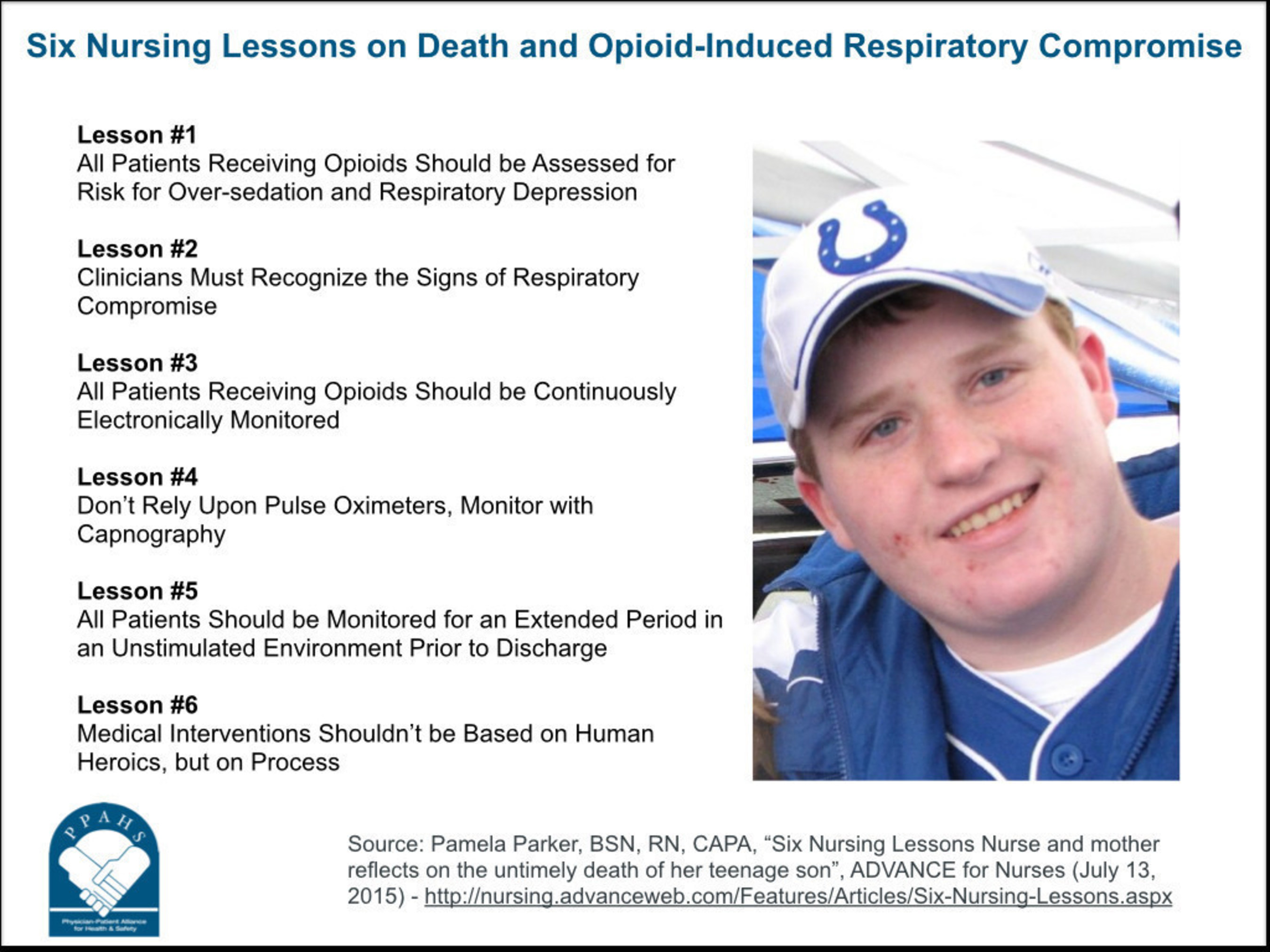Physician-Patient Alliance for Health & Safety (PPAHS) released six lessons on death and opioid-induced respiratory compromise in honor of the death anniversary of 17-year old Logan.
In an article, Pamela Parker, BSN, RN, CAPA discusses lessons that she learned from the untimely death of her teenage son, Logan:
On July 23, 2007, my 17-year old son Logan died after successfully undergoing routine surgery to correct his sleep apnea. As a recovery room nurse, I have often asked myself how this could have been prevented.
By writing these six lessons I learned, I hope that other loved ones may be saved, other families spared the agony of losing a cherished member.
Ms. Parker's six nursing lessons are:
"The death of a child is especially sad," said Michael Wong, JD (Founder and Executive Director, PPAHS), "particularly when the death might have been prevented. There are unfortunately many articles about children passing away after successfully undergoing surgeries or other procedures."
PPAHS recently honored July 17, the day that 18-year old Amanda Abbiehl died five years ago after being connected to a patient-controlled analgesia (PCA), In remembrance of that day, PPAHS released the podcast, "Opioid-Induced Respiratory Compromise Can Be Prevented".


